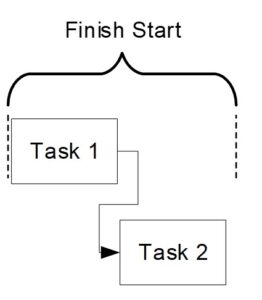Task Dependencies and Probability
Flip a coin, heads, or tails. The probability that it will come up heads is 50%; there are only two sides. Flip that same coin again, the same probability, 50%. However, if we say that success is two successive heads (or tails) that is different. The probability of two consecutive heads is the product of the two coin tosses (50% x 50%) or 25%.
I’m sure we understand task dependencies. This is fundamental to project management and scheduling. Dependencies are the connections between tasks; for example, I must put socks on before I put my shoes on (assuming I wear socks, which I generally do). Of course, this is not the only type of dependency (finish-start). There are four, actually;
- Finish-start
- Start-start
- Start-finish
- Finish-finish
Let us focus on finish-start for a bit. Specifically, let’s talk about a portion of the resulting schedule and the consequences of the task on the entire project.
Each task has been assessed to have a 90% probability of completion. Both tasks must be completed to be successful, and success is defined as accomplishing the attributes of the task, that is, objective, cost, and schedule.
The probability of completing the tasks at 90% may sound pretty good, that is, until you use some math. Let’s say these tasks are also unique; that is, one task has no bearing on the probability of the other’s success, depending on the predecessor. So, the probability of successfully completing these four tasks is 65.61%.
90% x 90% x 90% x 90% = 65.61%
A probability of 65.61% success may not sound horrible until you realize that very few projects consist of 4 dependent tasks or have a task probability of success of 90%. Most tasks are not independent of the prior task; the quality of the preceding task’s output will impact the dependent task’s probability of success. For example, the quality of the product specification will likely impact the quality of the hardware and software designed from that documentation.
If your project plan has no slack, you are on what my friend Kim Pries calls a death march. Planning long-term projects, that is aspects that are way in the future, will especially suffer from this malady. This is one of the benefits of the agile approach, where planning has a clear short-term focus, contrary to the frequent approach to conventional projects.
We can learn much about the overall project by looking at the individual tasks. It is certain that sometimes identifying the probability of the individual tasks’ potential success is more of a subjective exercise. However, there are also times when subject matter experts, those who do the work, or perhaps some available process measurements add some credibility to the assessment.



